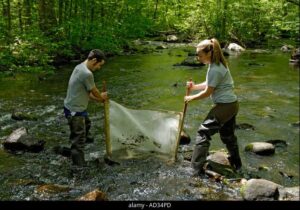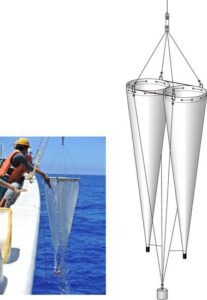Back to: ZOOLOGY 500 Level
Welcome to class!
Hello my brilliant friend! I trust you’re doing well today. As always, it’s a joy to guide you through your journey into the natural world. Today, we’ll be learning about some of the most practical and widely used tools in ecological research: plankton nets, kick sampling, and seine nets. These are essential techniques for collecting organisms from aquatic environments—whether it’s the rivers of Niger State, mangroves of the Niger Delta, or lakes around Jos. If you’re dreaming of becoming a marine biologist, aquatic ecologist, or conservationist, these are tools you’ll need to master.
Plankton Nets, Kick Sampling, Seine Nets
Plankton Nets
Plankton nets are specialised fine-mesh nets used to collect microscopic organisms—plankton—from water bodies. Plankton includes both phytoplankton (tiny plant-like organisms) and zooplankton (tiny animal-like organisms), which are foundational to aquatic food webs. Without them, fish, whales, and other marine life wouldn’t survive.

The net is usually shaped like a cone and attached to a rope. It’s dragged either horizontally or vertically through water to collect plankton into a small container (called a cod-end) at the bottom of the net.
For instance, an ecologist studying the water quality of River Kaduna might use a plankton net to monitor plankton diversity. If certain pollution-tolerant species dominate the sample, it may indicate poor water quality.
Kick Sampling
Kick sampling is a hands-on technique used mainly in shallow, fast-flowing streams and rivers to collect benthic (bottom-dwelling) invertebrates like insect larvae, snails, and small crustaceans.
To do it, you place a net downstream and gently kick the riverbed upstream, disturbing the organisms hiding in the sediment so they flow into the net. It’s simple but very effective.
This method is often used in Nigeria’s upland rivers in Plateau or Taraba states. It helps environmental officers assess water quality because the types of invertebrates collected can serve as bioindicators—some are sensitive to pollution, while others are not.
Seine Nets
Seine nets are larger nets used to catch fish and other larger aquatic organisms in lakes, ponds, or calm rivers. The net is stretched between two poles and dragged through the water by two people, scooping up animals in its path.
Seine netting is great for assessing fish populations or conducting biodiversity studies in places like Lake Oguta or coastal lagoons in Badagry. Because it allows for sampling over a wide area, researchers can collect fish of various sizes and species at once.
Applications and Importance
Biodiversity Monitoring: These tools help identify the variety of life in water bodies, which is crucial for conservation.
Pollution Assessment: The presence or absence of certain aquatic species tells us a lot about water quality.
Fisheries Management: Estimating fish populations helps ensure sustainable fishing.
Research and Education: These methods train young scientists and support global scientific studies.

Real-Life Nigerian Example
A team of researchers from the University of Ibadan conducted a survey of aquatic life in Ogun River using all three methods. They used plankton nets to study the base of the food chain, kick sampling to check invertebrate health, and seine nets to assess fish population diversity. Their results helped inform local government on the impact of farming and waste disposal on aquatic life.
Summary
- Plankton nets collect microscopic plankton from water bodies.
- Kick sampling helps gather invertebrates from riverbeds.
- Seine nets are used to catch fish and other larger aquatic organisms.
- These methods are vital for environmental research, pollution monitoring, and ecosystem management.
Evaluation
- What is the primary purpose of a plankton net in ecological studies?
- Explain how kick sampling is done and what type of animals it collects.
- Why is seine netting important in fish population studies?
- How can these sampling methods indicate the health of a water body?
You’re doing so well! Every tool you learn is a step closer to becoming the type of ecologist that protects and understands nature with wisdom and skill. Afrilearn is here with you all the way—keep growing, keep shining, and remember: Nigeria and Africa need your brilliance!
